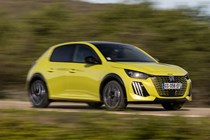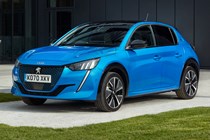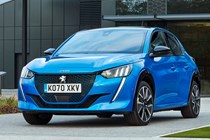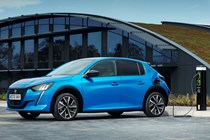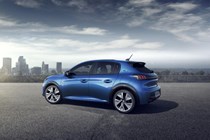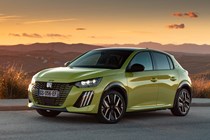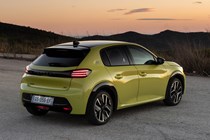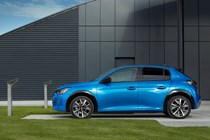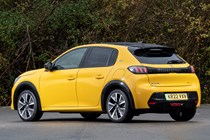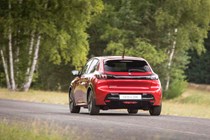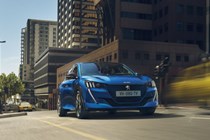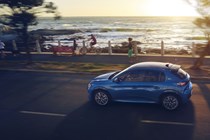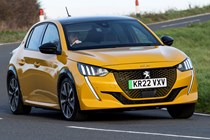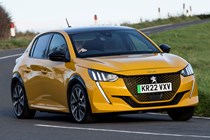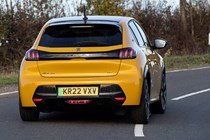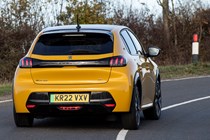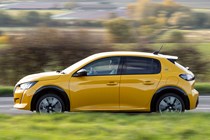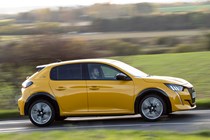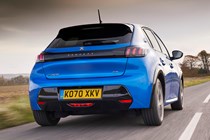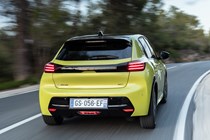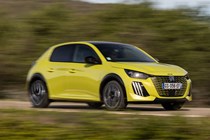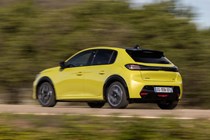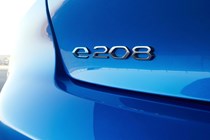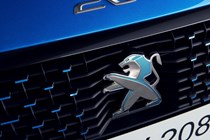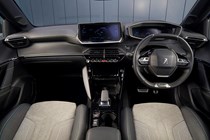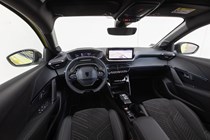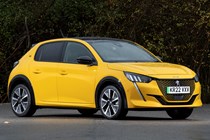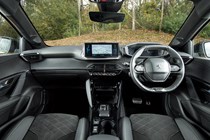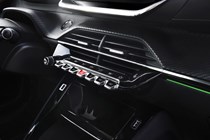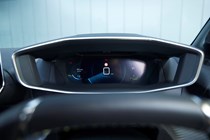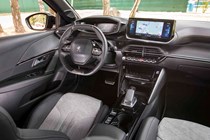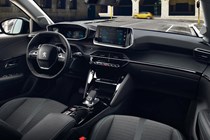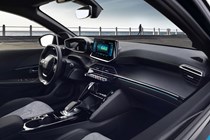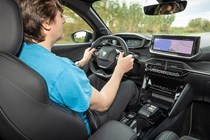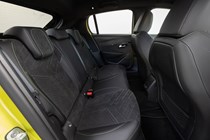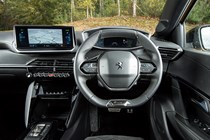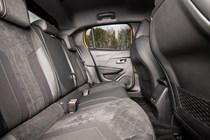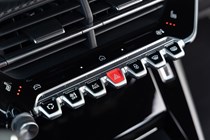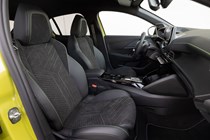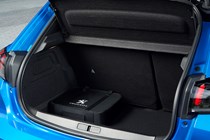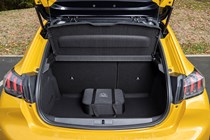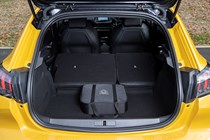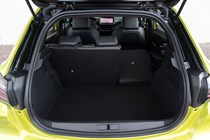
Peugeot e-208 engines, drive and performance
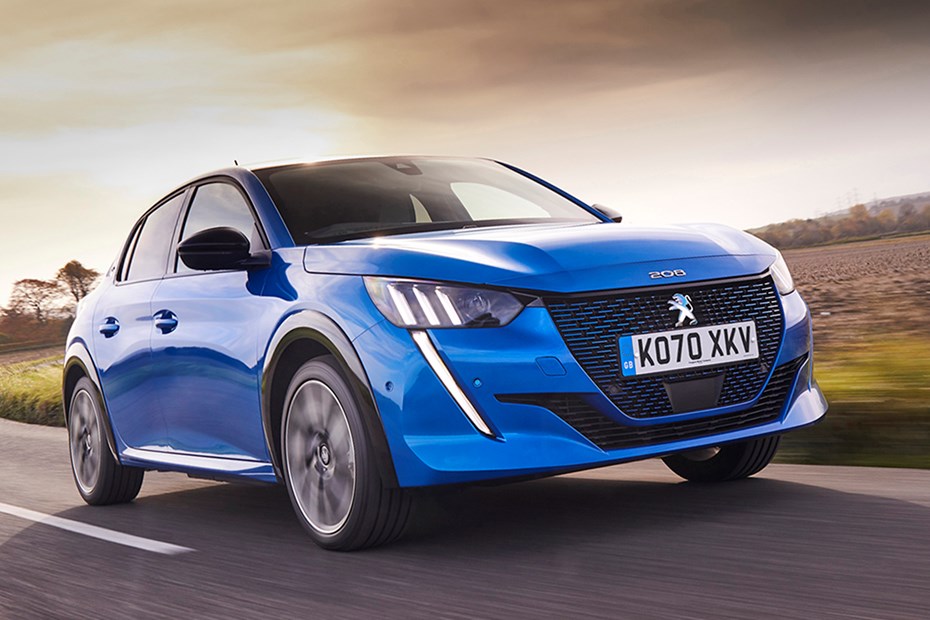
- E-208 now available with choice of two motors
- Original 136hp model joined by newer 156hp version
- Electric models are the fastest 208s you can buy
Electric motors
Peugeot treats the E-208 as an engine variant of the regular 208, and now there’s a choice of two electric motors as well.
Joining the original 136hp version, as part of the 2023 facelift Peugeot has added a more powerful 156hp electric motor, which comes with a slightly larger 51kWh battery (compared with the 136hp model’s 50kWh pack).
Acceleration is little different – in fact, the 136hp model is quoted as slightly faster, taking 8.1 seconds to go 0-62mph rather than 8.2 seconds – and both have similar levels of instant torque. But the more powerful version does feel a touch quicker on the move.
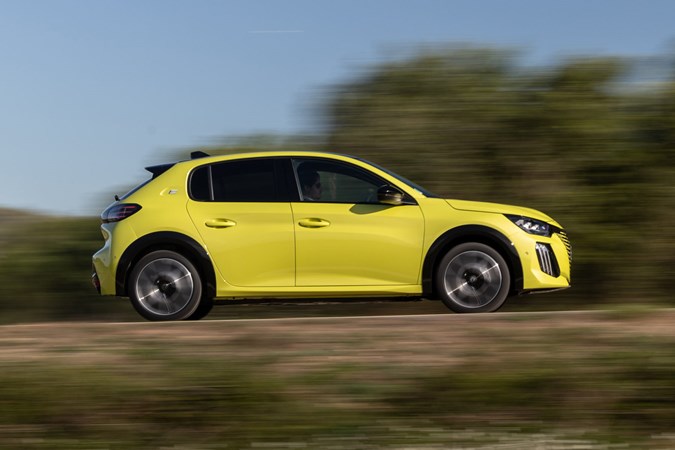
To get the full effect of this you have to put it into Sport mode, which sharpens up the accelerator response and gives you access to full power all of the time. In Normal mode, both motors are reduced to 108hp unless you put your foot down hard, while the Eco setting knocks this back even further to 81hp. Eco also restricts the air-conditioning in an effort to maximise driving range.
Outside of Sport, response is a rather soft, making the E-208 feel more like a conventional automatic than a single-speed electric car. And even if you do instantly reach for the drive mode switch every time you climb in, you’ll still need to carefully plan your overtaking. As electric cars go, this is not an especially rapid offering.
Peugeot includes standard and ‘B’ modes for the regenerative braking – the latter much more pronounced when you release the accelerator. While this is still a far-cry from the ‘one-pedal’ driving offered by some rivals it should help reduce how often you need to rely on the conventional brakes in stop-start driving situations; you may find it’s less efficient than the regular mode on faster roads, however.
What’s it like to drive?
- Battery weight blunts performance
- Planted feel with lots of grip
- Ride comfort could be better
As with all electric cars the biggest problem here is weight – the additional mass of the battery pack means the Peugeot E-208 weighs 1,465kg. That’s at least 237kg more than any other 208, and the equivalent of carrying around three or four extra passengers at all times.
So though this extra heft is located low in the chassis and distributed relatively evenly, the E-208 isn’t quite as agile as the lighter petrol models. The steering is quick – sometimes almost too quick around town – and the feel a little inconsistent, but the Peugeot certainly has plenty of grip and doesn’t roll around too much in the corners. Meaning you can carry a decent lick of speed if you’re enthusiastic.
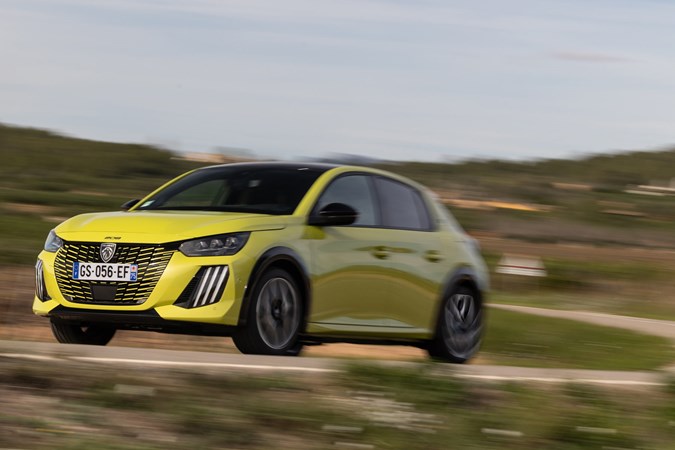
Ride comfort, however, is merely okay. The biggest issue is how unimpressive it is over sharp irregularities such as potholes, which is compounded by a general feeling of being unsettled on lumpy and undulating road surfaces. We’d trade a little of the softness in the suspension for greater control if we could, but we suspect Peugeot has reached the compromise it’s chosen to avoid the relatively short E-208 feeling skittish on bumpy roads.
Overall, we think it’s a reasonable effort, and generally makes sense for a family car that isn’t pretending to be a hot hatch.


